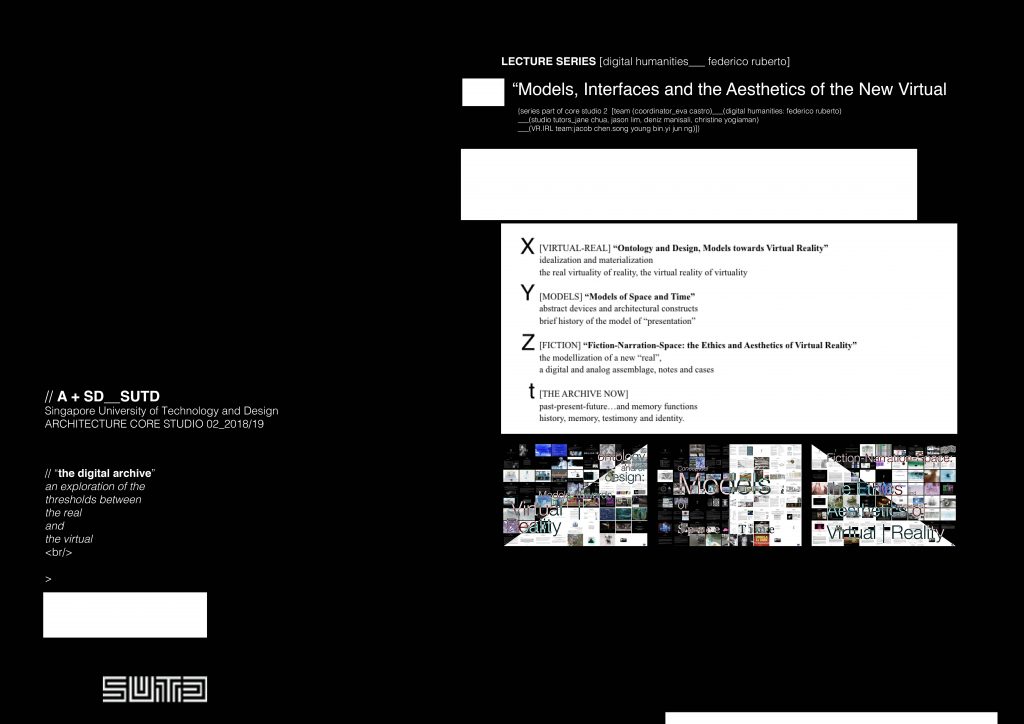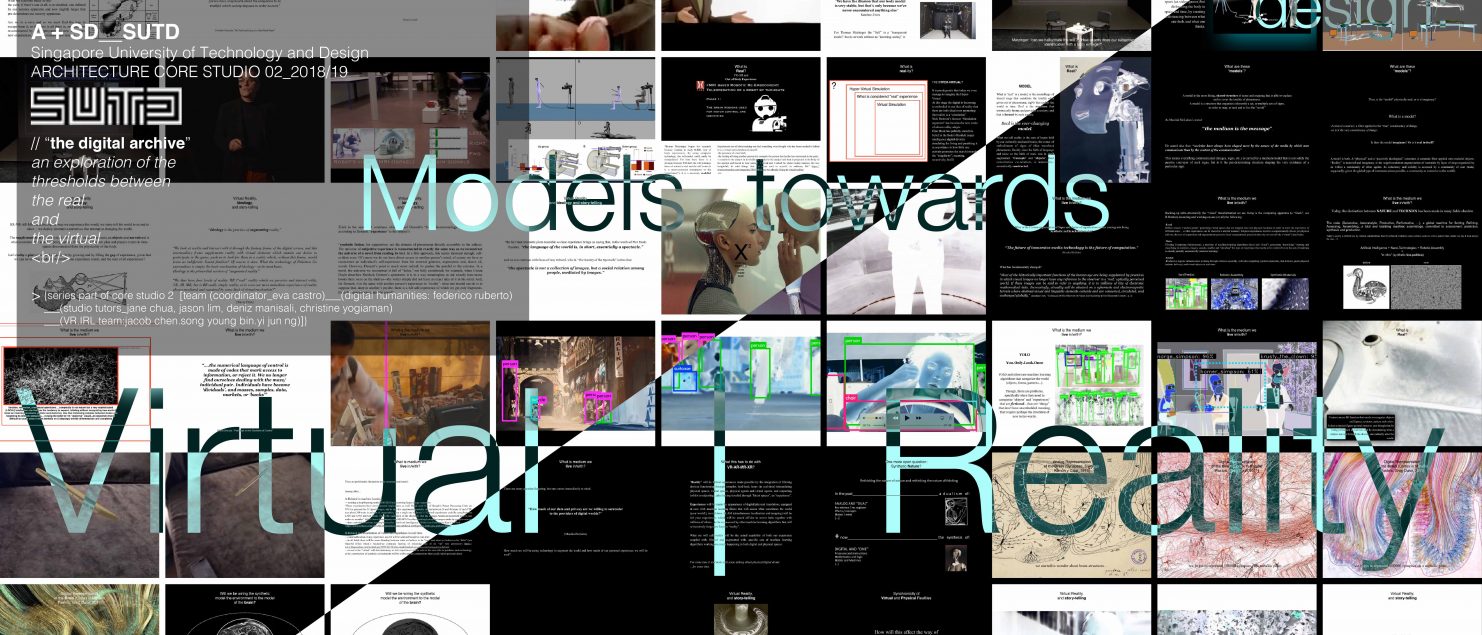Lecture: “Ontology and Design: Models towards Virtual | Reality”
Federico Ruberto’s lecture (1-2) titled “Ontology and Design: Models towards Virtual | Reality”, developedfor Core Studio 2 at Singapore University of Technology and Design, and part of “digital humanities” lecture series titled “Models, Interfaces and the Aesthetics of the New Virtual”.
Within Core Studio-2 at SUTD Federico Ruberto has been responsible of giving the students a taste of “digital humanities”. For it he developed a series of lectures titled “Models, Interfaces and the Aesthetics of the New Virtual” deployed in three-double parts:
—1-2 title: “Ontology and Design: Models towards Virtual | Reality”. The lectures touches upon the recent development of augmented reality and virtual reality, it exposes the students to main philosophical figures in order to have them wondering about the question: what is “real”? What constitutes reality —given that we live a contemporaneity modelled by generative algorithms, given how epistemology will be more and more affected by machine learning models? What is to design experiences and spaces in such contemporaneity in which the subject (the subject of design and the subject that designs) is lead towards “its” complete digitalization?
—3-4 title: “Conceptual Models of Space | Time”. The lecture was made with the intent of passing this message: we do not utilizes technology to represent our design, but any technology predefines the model (epistemological, aesthetic, ontological) in which we design. It exposes the student to this message by marching through the history abstraction and representation, showing the transmutation how our conceptualization of space (in art and architecture) synchronously showing the development of devices of abstraction and of mathematics. The lecture touches the main historical thresholds at which thought transformed its form of modellization, how vision and the vision of space transformed accordingly. It starts from Greeks diagrams and architectural compositions to end with architectural experimentations in the digital paradigm.
—5-6 title: “Fiction-Narration-Space: the Ethics and Aesthetics of Virtual | Reality”. The lecture is on the relationship between “fiction and reality”, developed according to how such dichotomy is exposed in the work of Jaques Rancière. It attempts at showing also the relationship between architecture and fiction taking as primary example the work of Liam Young, it does so by first introducing the students to the complex knot between literature and space (Ballard, Sterling, Borges, Kafka, Blanchot, Bernhard, Calvino, Poe, Vonnegut). It then shows a diverse range of experiments that play between architecture and the space of narration (that of virtual reality and of game engines), hinting at possible ways of re-learning architecture by analyzing literature and cinema (showing how cinema was remade by the work of Stan Brackage, Michael Snow, Chris Marker and by the recent experimental work “DAU”). The lectures reaches a final apex in which it exposes the student to the question: what of narration and of spatial composition in the age of virtual-augmented reality? By commenting the work of Mackenzie Wark “Gamer Theory”, that of Alex Galloway “Gaming” and by showing the last videos of Harun Faroki (on game models) it ends by asking: what form of experiences shall we design without making design succumb to the forces of the market and the relentless process of commodification?


